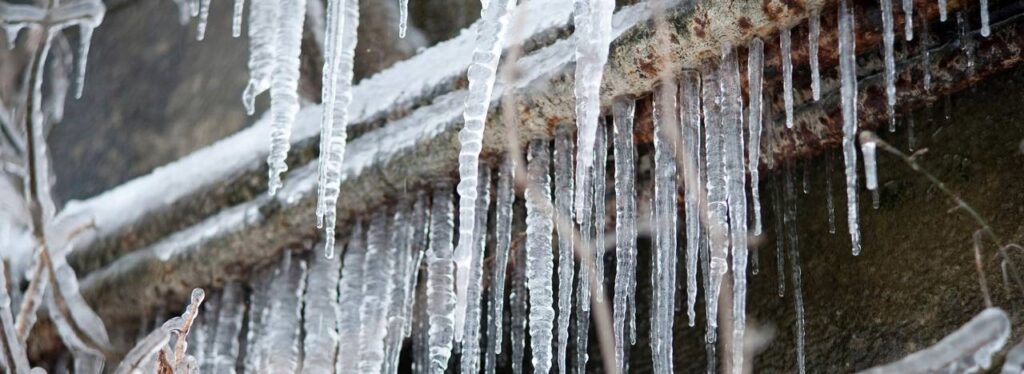Ways to Avoid Frozen Pipes in Winter: Expert Guidance
Ways to Avoid Frozen Pipes in Winter: Expert Guidance
Blog Article
Are you trying to find facts and techniques involving Preventing and dealing with frozen pipes?

Winter can damage your plumbing, specifically by freezing pipes. Right here's just how to prevent it from occurring and what to do if it does.
Intro
As temperatures drop, the danger of frozen pipes boosts, possibly leading to expensive repairs and water damages. Understanding exactly how to stop frozen pipelines is important for home owners in cold climates.
Recognizing Icy Pipes
What triggers pipelines to ice up?
Pipes ice up when subjected to temperature levels below 32 ° F (0 ° C) for extended periods. As water inside the pipes freezes, it broadens, putting pressure on the pipe walls and potentially causing them to burst.
Risks and damages
Icy pipelines can bring about water supply disruptions, home damages, and pricey repair work. Ruptured pipes can flood homes and create considerable structural damages.
Signs of Frozen Pipeline
Identifying icy pipelines early can prevent them from rupturing.
Exactly how to recognize frozen pipes
Try to find lowered water circulation from taps, unusual smells or sounds from pipelines, and noticeable frost on revealed pipelines.
Prevention Tips
Insulating vulnerable pipelines
Cover pipes in insulation sleeves or use heat tape to protect them from freezing temperature levels. Concentrate on pipes in unheated or external locations of the home.
Heating strategies
Maintain interior rooms appropriately heated up, especially areas with pipes. Open closet doors to allow cozy air to circulate around pipelines under sinks.
Safeguarding Exterior Plumbing
Yard pipes and outdoor faucets
Separate and drain yard hoses before winter months. Install frost-proof faucets or cover exterior faucets with insulated caps.
What to Do If Your Pipelines Freeze
Immediate activities to take
If you presume frozen pipes, maintain taps open up to alleviate stress as the ice melts. Use a hairdryer or towels soaked in hot water to thaw pipes slowly.
Long-Term Solutions
Architectural adjustments
Think about rerouting pipes away from outside walls or unheated locations. Include added insulation to attics, cellars, and crawl spaces.
Upgrading insulation
Buy high-grade insulation for pipes, attics, and wall surfaces. Proper insulation assists keep consistent temperature levels and reduces the risk of frozen pipes.
Verdict
Preventing frozen pipes needs aggressive actions and quick reactions. By recognizing the causes, signs, and safety nets, homeowners can shield their pipes throughout winter.
5 Ways to Prevent Frozen Pipes
Drain Outdoor Faucets and Disconnect Hoses
First, close the shut-off valve that controls the flow of water in the pipe to your outdoor faucet. Then, head outside to disconnect and drain your hose and open the outdoor faucet to allow the water to completely drain out of the line. Turn off the faucet when done. Finally, head back to the shut-off valve and drain the remaining water inside the pipe into a bucket or container. Additionally, if you have a home irrigation system, you should consider hiring an expert to clear the system of water each year.
Insulate Pipes
One of the best and most cost-effective methods for preventing frozen water pipes is to wrap your pipes with insulation. This is especially important for areas in your home that aren’t exposed to heat, such as an attic. We suggest using foam sleeves, which can typically be found at your local hardware store.
Keep Heat Running at 65
Your pipes are located inside your walls, and the temperature there is much colder than the rest of the house. To prevent your pipes from freezing, The Insurance Information Institute suggests that you keep your home heated to at least 65 degrees, even when traveling. You may want to invest in smart devices that can keep an eye on the temperature in your home while you’re away.
Leave Water Dripping
Moving water — even a small trickle — can prevent ice from forming inside your pipes. When freezing temps are imminent, start a drip of water from all faucets that serve exposed pipes. Leaving a few faucets running will also help relieve pressure inside the pipes and help prevent a rupture if the water inside freezes.
Open Cupboard Doors
Warm your kitchen and bathroom pipes by opening cupboards and vanities. You should also leave your interior doors ajar to help warm air circulate evenly throughout your home.

I am just very interested by Prevent Frozen Pipes and I am assuming you appreciated my blog post. Sharing is nice. Helping others is fun. Thanks so much for your time spent reading it.
Schedule Today Report this page